The Columbine was initially known as the flower dedicated to the Goddess Freya, who stood for sensual love and seduction. But by the 15th century, there had been a bit of an about turn in terms of the flower’s association. Particularly in Dutch and Flemish paintings where the flower often represents courtly love, and the virgin Mary. Columbines were also used in late medieval paintings as a symbol of the Holy Spirit and a token of peace and hope. The Holy Spirit was often pictured as a dove and you can see the link between the dove and the Columbine if you look closely at the flower parts. It looks like a circle of five doves (or pigeons).
As R.C.A. Prior, MD wrote in his book ‘On the Popular Names of British Plants’ published in 1879:
“COLUMBINE, from Latin columbina, adj. of columba, pigeon, from the resemblance of its nectaries to the heads of pigeons in a ring round a dish, a favourite device of ancient artists.”
For centuries people have seen pigeons in the shape of the flowers. The Anglo-Saxons already called it Culverwort, meaning pigeon herb (culfre: pigeon, wort: herb). But after the Norman Conquest in 1066, ‘Colambine’ took over, meaning ‘dove’s plant’ in Old French. Over time that became Columbine.
It wasn’t only doves and pigeons that people saw in the shape of the Columbine flowers. At the other end of the bird spectrum, they saw a resemblance to the talons of the mighty eagle in the flower’s spurs (the curly bits at the end containing the nectar). Aquila is Latin for eagle, and the word Aquilegia was used as a word for the Columbine plant from the 13th century, and later became the official scientific name.
Words derived from Aquilegia are still used in many Western European languages. For example Ancolie in French, Akelei in Dutch and German, Akleja in Swedish, Akeleie in Norwegian and Akeleje in Danish.
Nicholas Culpeper (1616-1654), famous physician and herbalist, recommends gargling with an infusion of Columbine leaves as a treatment for sore mouths and throats. He also recommended using the seeds soaked in wine as a remedy for jaundice. But about 100 years later Carl Linnaeus (1707-1778), a biologist and physician, warned (in another Columbine U-turn) against using Columbine as medicine in any form as he had heard that children had been poisoned when it was given to them as medicine.
The poisonous properties did seem to have one useful application though: it was said that if you dried and crushed the shiny black seeds they could be used as a remedy for nits.
As pretty as the flowers are, it still comes as a surprise that Thomas Tusser (circa 1515/1524-1580), poet, farmer and agricultural writer, recommended growing them in pots on windowsills. One doesn’t associate decorative flower pots on windowsills with the often harsh life in the Middle Ages. But then we also know that inn-keepers in the 1500s often decorated their taverns with daffodils in early spring.
Other words for Columbine are: Boots and Shoes, Capon's Feather, Capon's Tail, Cock's Foot, Dove's Foot, Granny’s Nightcap, Hawk's Feet, Hen and Chickens, Lady's Shoes, Sowdwort, Two Faces Under A Hat, Sugar-Bells, Devils-bells and Our lady’s glove.
‘Vulgaris’ is Latin for ‘ordinary’ or ‘common’.
If you enjoyed reading this, you might enjoy reading about other wildflowers too. You can easily find all posts written so far in the Flowerology alphabetical archive .
This newsletter is NOT a field guide for flower identification. It’s often difficult to tell the difference between harmless plants and poisonous plants and some flowers are rare and protected by law, so, NEVER pick or use any plants or flowers if you’re not sure about them.
illustrations and text ©Chantal Bourgonje


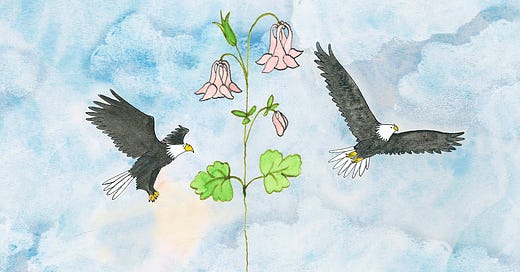




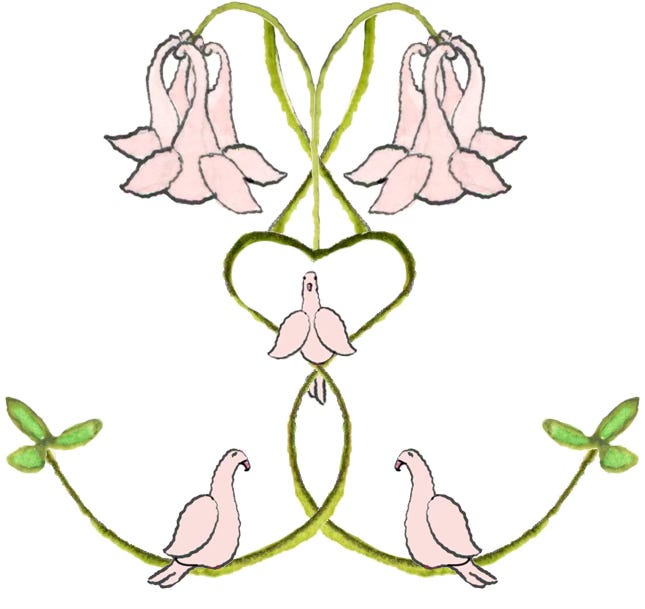

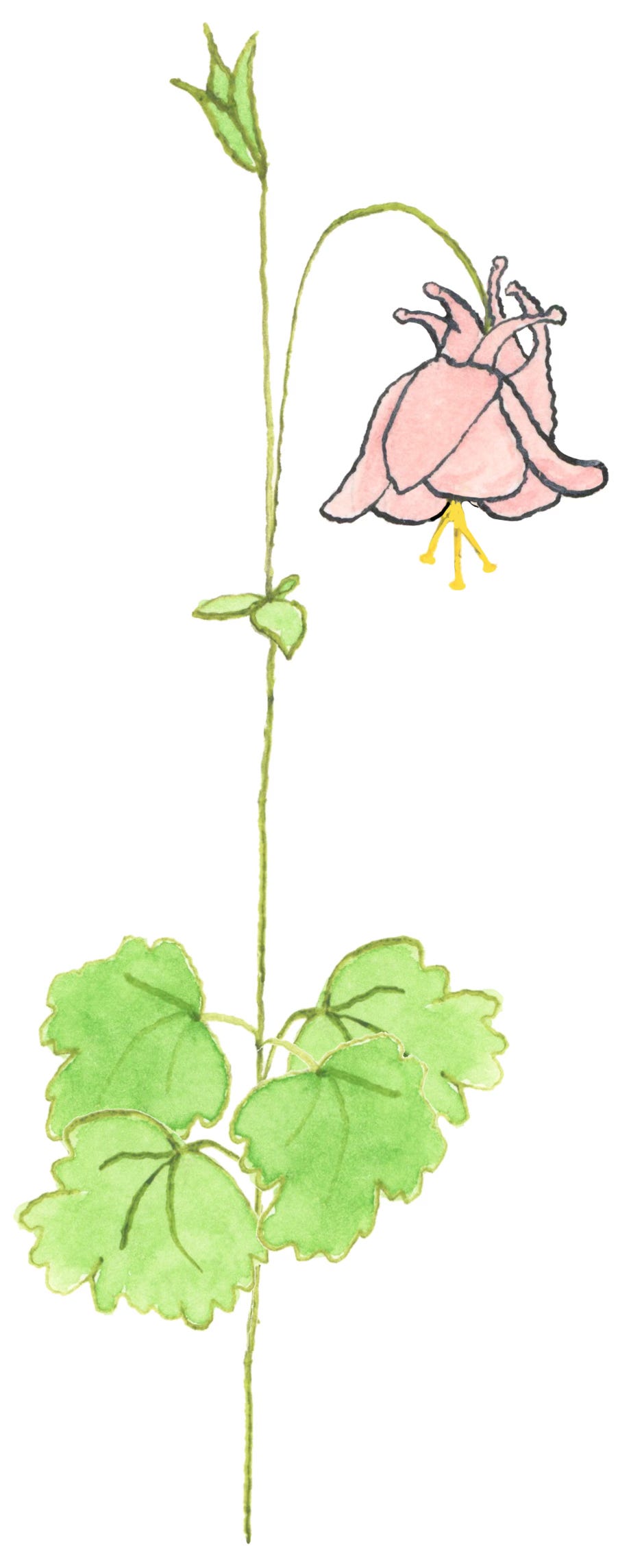
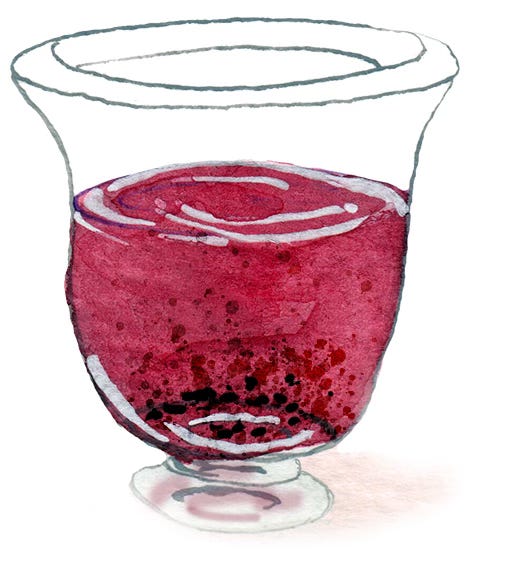
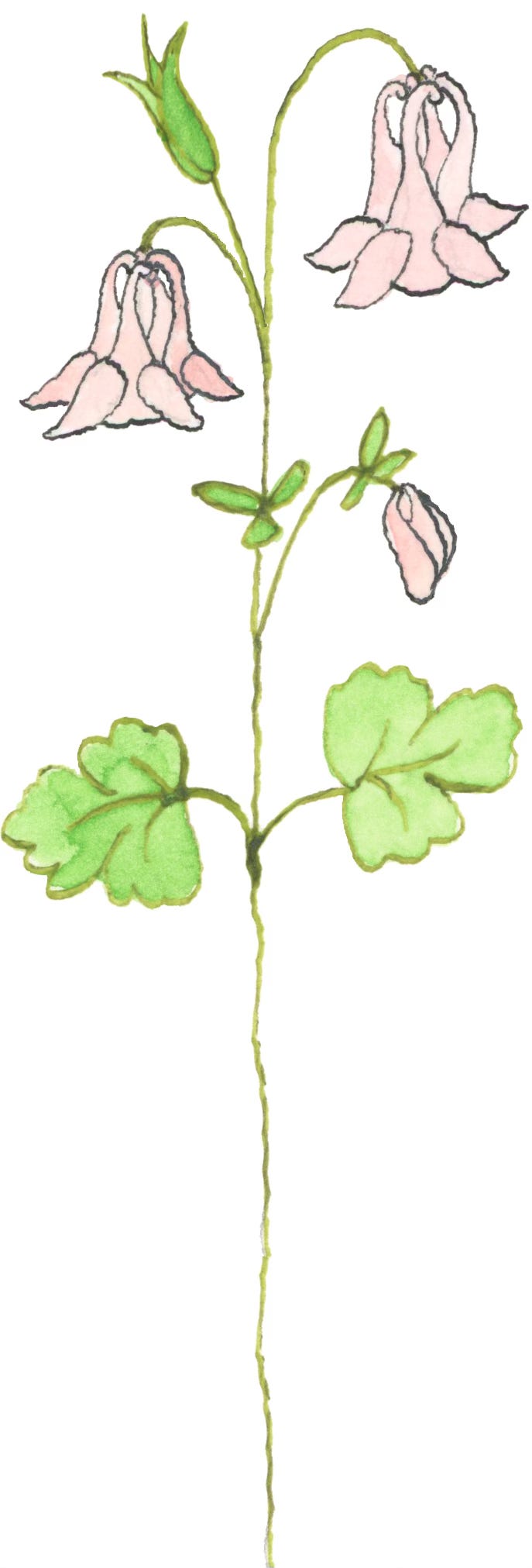
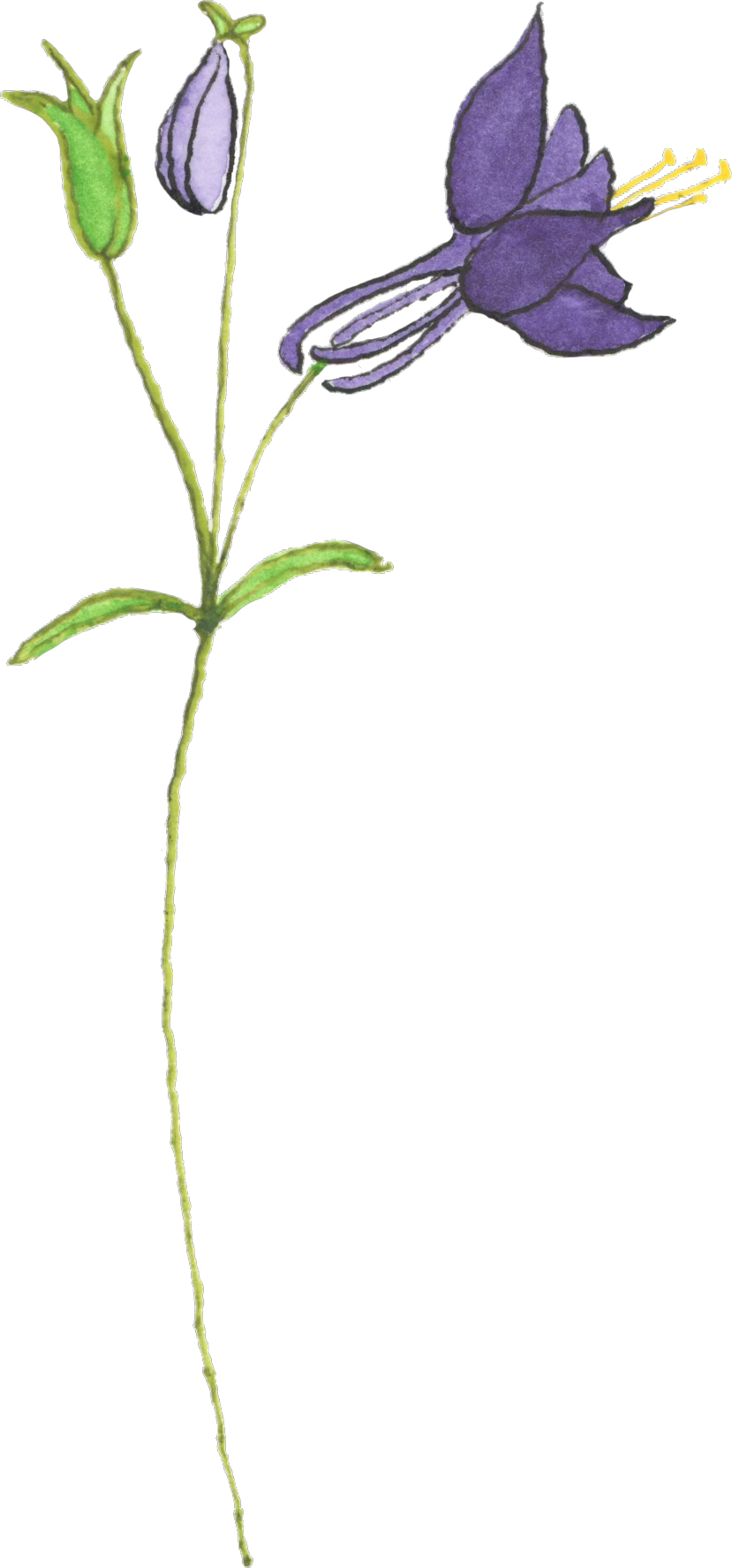

My daughter started a columbine from seed and I planted it as just a tiny thing with a couple of leaves. It has been coming up every spring. They look so delicate but seem pretty resilient!
I’m forever going to see pigeons when I look at them now. I love them and all their surprise variations 🧡